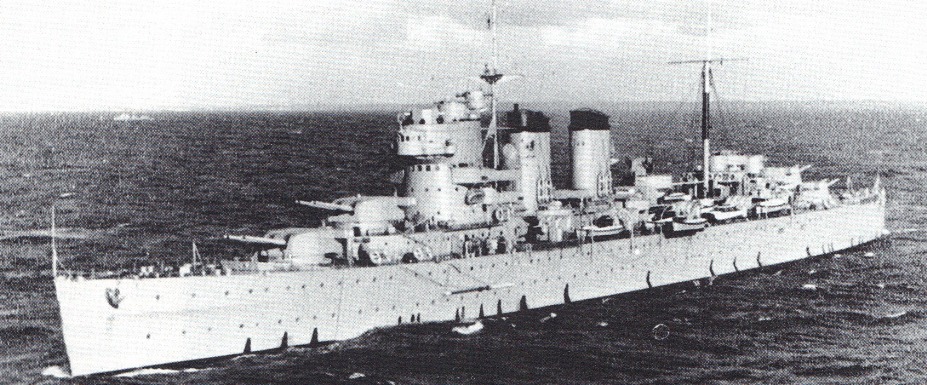|
Construction consisted of A tube, B tube not extending to the muzzle and a jacket. |

Heavy Cruiser Canaris
|
| .
|
|
Construction consisted of A tube, B tube not extending to the muzzle and a jacket. |

Heavy Cruiser Canaris
|
| .
|
| Designation | 8"/50 (20.3 cm) Model 1924 Mark D |
| Ship Class Used On | Canaris class |
| Date Of Design | 1924 |
| Date In Service | 1936 |
| Gun Weight | 15.8 tons (16.05 mt) |
| Gun Length oa | N/A |
| Bore Length | about 400 in (10.160 m) |
| Rifling Length | N/A |
| Grooves | N/A |
| Lands | N/A |
| Twist | N/A |
| Chamber Volume | N/A |
| Rate Of Fire | about 3 rounds per minute |
| Type | Bag |
| Projectile Types and Weights | AP - 256 lbs. (116.1 kg)
HE - 256 lbs. (116.1 kg) |
| Bursting Charge | N/A |
| Projectile Length | N/A |
| Propellant Charge | 80 lbs. (36.3 kg) |
| Muzzle Velocity | 2,904 fps (885 mps) |
| Working Pressure | N/A |
| Approximate Barrel Life | N/A |
| Ammunition stowage per gun | N/A |
| Elevation | With 256 lbs. (116 kg) AP Shell |
| Range @ about 49 degrees | 32,530 yards (29,750 m) |
| Designation | Two-gun Turrets
Canaris (4) |
| Weight | N/A |
| Elevation
(see Note) |
-5 / +70 degrees (one source says +50 degrees) |
| Elevation Rate | N/A |
| Train | about +120 / -120 degrees |
| Train Rate | N/A |
| Gun recoil | N/A |
| Loading Angle | +8 degrees |
| Notes:
1) These mountings were generally similar to the British Mark II and had similar hollow rammers for holding the propellant charges. Compared to the Mark II, the roller path diameter was smaller as was the inner barbette diameter. 2) Regarding the elevation of these mountings; most of the British Mark II mountings had +70 degree elevations, as they were intended to operate in the AA mode. So, it is quite possible that these Spanish mounts also had as high a maximum elevation. 3) The distance between gun axes was 76 inches (193 cm). |
|
22 September 2007 - Benchmark
18 February 2012 - Updated to latest template